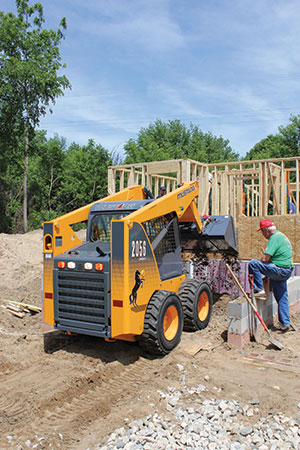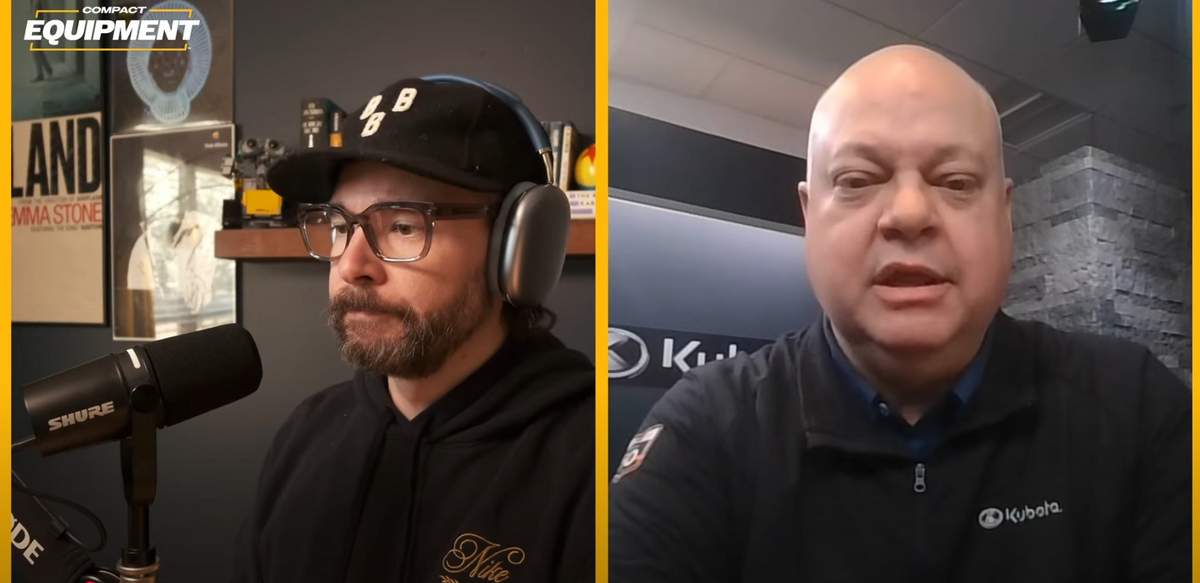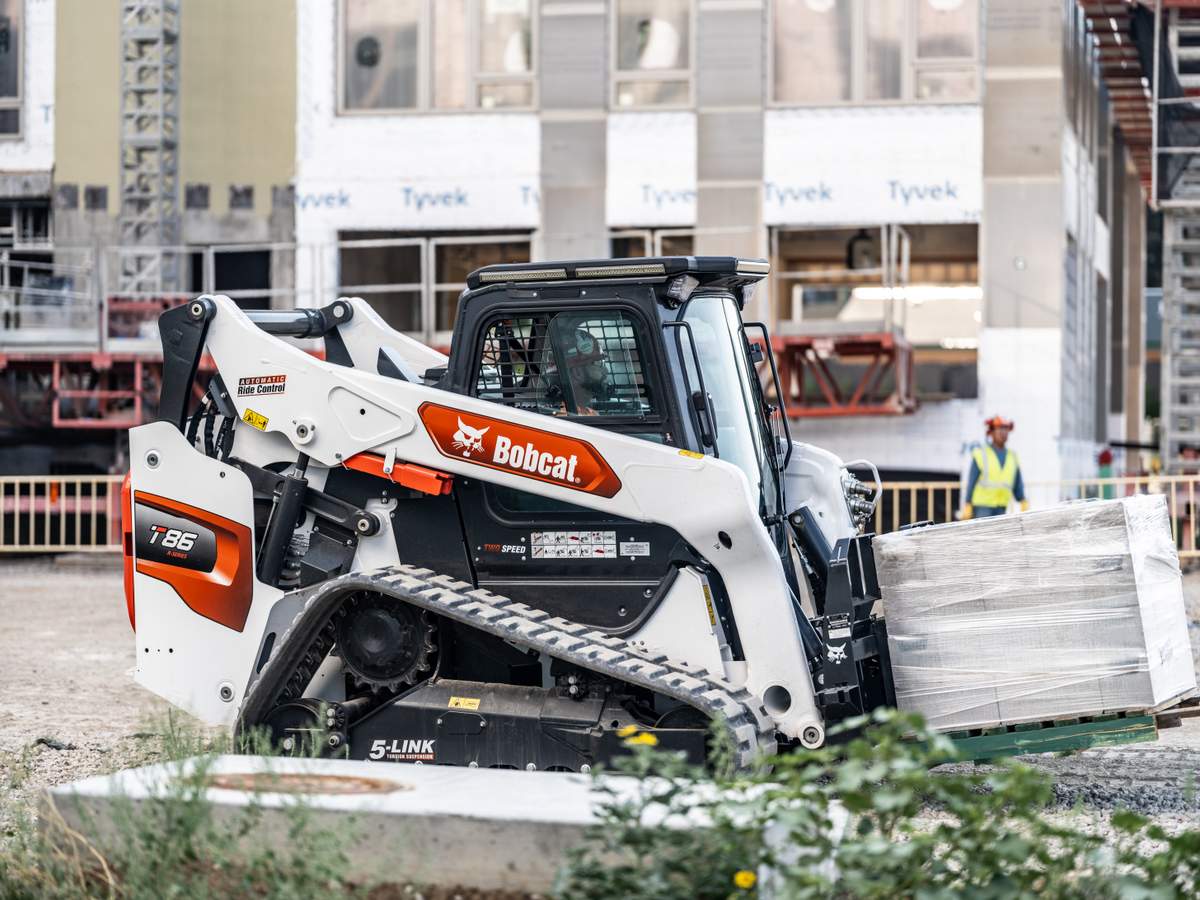Charting the Skid Steer Industry
The skid steer is a uniquely American machine, and its sales numbers are a good barometer for the health of the U.S. construction equipment industry. The skid steer is a multifaceted attachment-taker born out of the Midwest farming industry in the 1950s. Today, it’s the benchmark for the compact hydraulic tool carrier category of equipment, migrating into an abundance of applications with its ability to run hundreds of attachments off its high-pressure hydraulic power system.

“Through the third quarter in 2012, there was an estimated 25,000 skid loaders sold in North America, which was approximately 15 percent higher than in 2011 and approximately 20 percent higher than 2010,” explains Kelly Moore, product and training specialist for the Manitou Group (which today owns loader brands Gehl and Mustang). “As of this timing, it is unclear as to how the marketplace will react to the past election, the anticipated workloads of contractors and the overall economy in general. It could be a similar year or slightly downward. Another issue that will surface is the transitioning of engines to Tier 4 and the implications that will have on machine costs that will place pressures on price increases.”
Of course Tier 4-compliant diesel engines will affect every category of construction equipment over the next few years. Here’s a refresher: The most stringent yet of the EPA’s regulations for non-road diesel engines, known as Tier 4 Interim, effectively began New Years Day 2012 (at least for diesel engines in the 75- to 174-hp bandwidth). Since the Clean Air Act of 1990, both gas and diesel engine manufacturers for construction equipment have been intermittently designing new engines with high technologies aimed at significantly reducing the amount of pollutants released into the atmosphere by diesel power plants (these government-imposed regulations are called Tiers). The final and most intensive of these EPA Tier regulations — which is broken into two deadlines called Tier 4 Interim (T4i) and Tier 4 Final — have diesel designers from Cummins to Caterpillar creating smarter, more complex and cleaner-burning engines.

“The biggest major market evolution is the focus on emissions and Tier 4,” agrees Gregg Zupancic, John Deere product marketing manager for skid steers and compact track loaders. “The developments of new engine models are being driven by EPA emissions standards. Like John Deere’s approach to previous regulatory tiers, the Final Tier 4 technology solution will be designed to consider overall performance and operating efficiency. Research and field testing determined that power, performance, ease of operation, fluid efficiency, reliability and economical operating costs are what customers expect.”
Each manufacturer’s strategy will be unique, but to offset the expense of these new cleaner-burning engines, most brands are often adding a lot of extras to sell their latest skid steer offerings. Caterpillar’s new D-Series loaders are a great example. The new Cat 272D and 272D XHP skid steer loaders utilize the Cat C3.8 diesel engine, which meets Europe’s Stage IIIB and America’s T4i emissions standards. To offset the cost and complexity of these new engines, Cat compensated customers with a new C3.8 power plant that now has net-horsepower increases that range from 5 to 18 percent and flywheel torque increases from 13 to 27 percent. Plus, each compact loader now comes with a whole host of unique efficiency features — like the “Intelligent Leveling” system — which enables three industry leading features: Electronic Dual Self Level, Work Tool Return to Dig and Work Tool Positioner.
Brands across the board revamped Tier 4 machine offerings with plenty of extras. Bobcat Co.’s 500 frame-size skid steer and compact track loaders began limited production last September with seven new models. With new Tier 4i engines, these new medium-size machines provide operators with extensive new feature upgrades, including increased visibility, a more comfortable cab and easier serviceability to maximize jobsite efficiency. Last year, Case Construction Equipment also upgraded its four largest Alpha Series skid steers and compact track loaders to meet emission requirements for Tier 4i certification, and they added a few power perks.
“Case skid steers and compact track loaders have always been known for power and productivity,” says Tim O’Brien, Case brand marketing manager. “Our upgraded Alpha Series models not only deliver best-in-class horsepower and industry-leading bucket breakout force [up to 8,585 lbs] but also more torque when you need it. When Case first looked forward at Tier 4 Interim and Tier 4 Final requirements, we made a commitment to going beyond compliance, taking advantage of required changes to make our equipment even more productive for our customers.”

“There is a strong synergy between our organizations, from our core culture and values to the complimentary fit of our product lines. We believe the market will readily embrace the quality and value that our products have to offer,” says Ted Bregar, president of Yanmar America.
Brands like Takeuchi and Yanmar hope to take some market share in a growing category of compact equipment. Today their competition will include Bobcat, Case, New Holland, JCB, Volvo, Hyundai, John Deere, Caterpillar, Gehl, Mustang and Terex.
“Bobcat is currently the market leader in skid steers and compact track loaders,” says Zupancic. “Caterpillar and John Deere rank a close second. New Holland and Case make up the other top players in the segment. Overall, these five manufacturers make up 90 percent of all skid steer sales today.”
Horsepower, operator usability and comfort have been priority upgrades for all of these manufacturers over the past several years. Skid steers boast more creature comforts and automation features. In the cab, pressurized cabins, adjustable seats and ergonomic controls make operators feel like they are in the driver’s seat of their own car. Routine tasks such as boom settings and wheel speeds can be automated with electro-hydraulic (EH) joysticks.
Other timesavers include quick-catch mechanisms that allow the operator to change attachments without leaving the comfort of the cab. Skid steers can now be equipped to run for longer hours and feature agility enhancements such as wheel and bucket speed settings. Speeds can be set to match the performance of an attachment, like a trencher or cold planer, with the push of your fingertips and a digital control panel.
“Contractors are also spec’ing their machines to improve productivity and versatility, with capabilities such as Ride Control, hydraulic quick-couplers, switchable electro-hydraulic control patterns and high flow or even enhanced high-flow auxiliary hydraulics,” says O’Brien. “Manufacturers are also responding to the demand for new attachments like mulchers that take advantage of the enhanced hydraulic capabilities of our skid steers to handle jobs that once were reserved for more expensive, specialized machines.”
Construction sales (specifically residential construction) make up the majority of skid steer sales, while landscape, agriculture and rental businesses are a close second. Traditionally the Midwest, the birthplace of the machine design, has seen the most sales volume. During positive economic waves, coastal regions such as New York, California, Texas and Florida have pulled ahead in sales due to new construction and growth. Today, the 1,750- to 2,200-lb rated load capacity is the most popular size category, which generally runs in the price range of $33,000 to $34,000.
“These size machines have more power, generally more lifting height and the overall further performance that owners are looking for in a skid steer loader,” says Moore. “As for the future, I see a continuation of improvements per customer needs and wants on machines. That is really the bottom line on where future loaders and their designs will go. Technologies are always changing and naturally we will implement new machine designs if they are applicable.”
Keith Gribbins is managing editor of Compact Equipment, based in Brecksville, Ohio.




